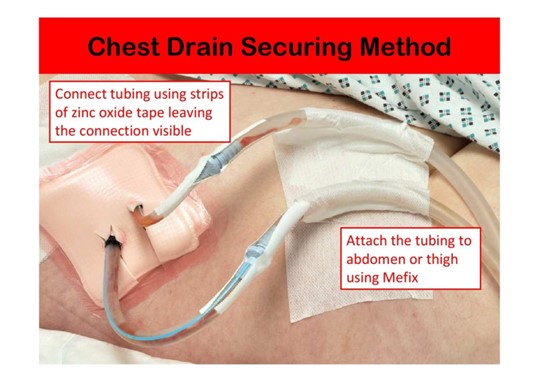Both penetrating and blunt chest trauma is common in major trauma. Motor vehicle collisions are associated with significant chest trauma and are the most common cause in our region. 25% of all trauma deaths are due to chest trauma. Thus, the chest must be quickly and accurately assessed, allowing treatment to occur in a timely fashion. Serious chest injuries account for approximately 4000 deaths in the UK each year. Many of these patients will require chest drain insertion.
Incorrect placement of a chest drain can lead to significant morbidity and even mortality.

There are 4 key British Thoracic Society recommendations:
- All personnel undertaking the procedure should have been suitably trained in theory, simulated practice and should be supervised until considered competent.
- Pleural procedures should not take place out of hours unless it is an emergency.
- Pleural procedures should take place in a clean environment with full aseptic technique.
- Chest drain insertion should be delayed where possible in anti-coagulated patients until the INR is <1.5.
NB. Chest drain insertion may be safely undertaken providing the INR is <2.0.
Use lignocaine with adrenaline as the local anaesthetic for all cases – this allows much more lignocaine to be used (40mls of 1% lignocaine for the average adult when pre-mixed with adrenaline is acceptable.)
Indications for Chest Drain in Trauma
- Pneumothorax: Following decompression of tension
- Haemothorax
- Haemo-pneumothorax
- Post Surgery.



